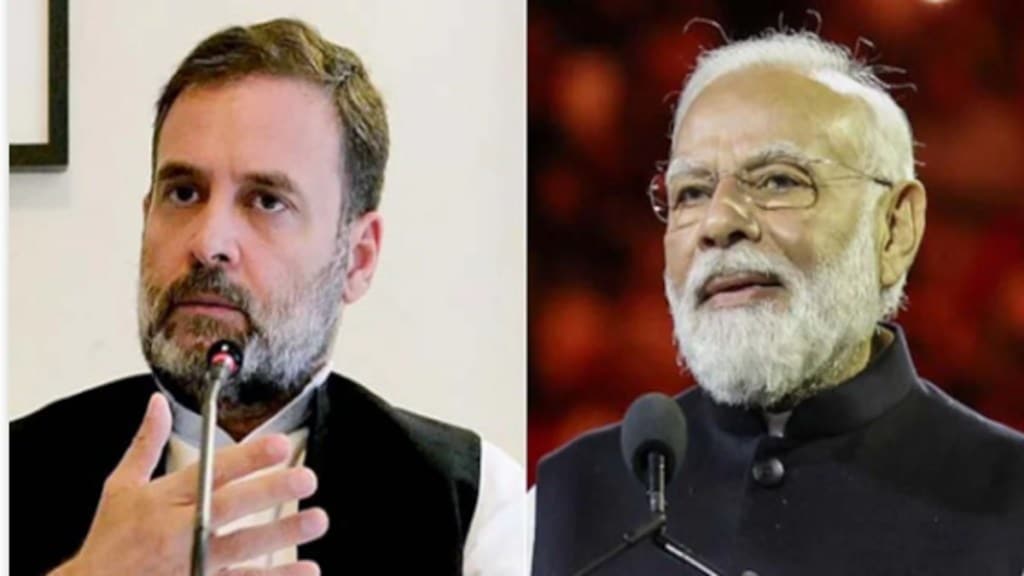The outcome of the Lok Sabha elections has reflected the economy’s debilitated growth capacity and the uneven distribution of the resultant pain as much as the remarkable resilience of India’s democracy. A seemingly ramshackle Opposition combine — Indian National Developmental Inclusive Alliance (INDIA) — has managed to gain much ground even in the face of the all-powerfulness of the Narendra Modi-led NDA and its exceptionally efficient electoral machinery and tact. A more cohesive and deft Opposition, it would seem, would have made the NDA bite the dust.
In the run-up to the 2014 elections, the BJP as the core of NDA had made many specific promises with regard to the economy: A “strong” rupee, reducing import dependence for crude oil to 65%, bringing back “every penny” of black money stashed abroad, 20 million jobs every year, doubling of farmers’ income, making India a manufacturing powerhouse and so forth.
A decade and two successive Modi governments later, these goals remain as distant and difficult as they ever were. The pandemic of course was a disruptor, and so were other externalities like turbulent geopolitics and a weaker global economy.
But policy infirmities and wrongs are also to be blamed for the below-potential economic growth being witnessed now. For the record, the headline GDP numbers have lately been impressive. Fiscal consolidation by the Modi government has been creditable and the country has accumulated ample forex reserves.
However, many indicators unmistakably suggest the economy’s travails: Subdued consumption, an inordinately delayed private capex cycle, heavily leveraged households, struggling MSMEs, long-stagnant rural wages, lack of any cumulative gains via foreign trade in goods and services, and above all, an acute jobs crisis.
Demonetisation, dominance of a handful of corporates that throttles free play of market forces in assorted sectors, a shift to centralisation when it comes to appropriation and allocation of fiscal resources and policy-making, have been among the Modi regime’s planks that undermined the economy’s capacity.
The question of equitable and sustainable development has come to the fore, amid definitive signs of growing inequality and inter-regional imbalances.
The new government to assume office in the next few days is likely to see some key coalition partners punching above their weight. While the Modi 2.0 regime has refused to acknowledge the economic fault-lines, the incoming coalition would do well to undertake a course correction, whatever its political hue.
As growth faltered, the Modi government sought to accelerate it with higher-than-trend public capital expenditure, and routed more of such investments via the Union government’s Budget. The reality is public investments, about 10-11% of the GDP, cannot stand guard for the economy, for longer years. Several years of elevated public capex, in good measure debt-funded, has already made state undertakings like the NHAI and the Railways heavily indebted.
The Modi regime has been steadfast in its preference for an investment-led economic revival, and avidly looked for a virtuous cycle to be created by corporate investments. It handed out a deep corporate tax cut in 2019, tweaked the concession agreements for public-private partnership projects, and sought to harness global patient capital for infrastructure via catalytic institutional financing.
This strategy of foregrounding investments ought to be modified. A broader consumption revival is essential for growth to revive and endure. This might require tax concessions and income transfer to the low-income sections of the population. The fiscal costs of such measures need to be calibrated in such a way that the incremental growth would offset these during the course of the next government. Correcting the consumption pattern, which has tilted more towards the premium segments since the pandemic, is vital for the revival of MSMEs and the broad-basing of private investments.
The four labour codes passed by Parliament in 2019-20 (all are yet to be notified) seek to ease the rigidities of the labour market, while boosting worker protection, rights and safety. However, what is needed to correct the poor (and stagnant) wages in the informal sector and rising inequality is a policy mix that would spur labour productivity. Adequate wages need to be ensured via effective implementation of minimum wages.
The country’s perceived demographic dividend needs to be realised before it fizzles out with time-bound skilling of its still-youthful population. Public expenditure in primary and secondary education ought to be scaled up, with a diligent mechanism to ensure optimum outcome of such spending.
While tax buoyancy has improved in recent years, the tax-GDP ratio is yet to catch up with the levels achieved in many years during the first decade of the millennium, and needs to rise by several percentage points. The goods and services tax hasn’t yielded the promised incremental fiscal or economic dividends (output effect), despite the recent acceleration in revenue mop-up. This comprehensive indirect tax needs to be reformed in conformity with federal principles.
Towards the end of its tenure, the Modi 2.0 government announced a plan to strengthen fiscal autonomy of Panchayati Raj Institutions. For this to bring about the intended results, states need to be encouraged to put skin in the game.

